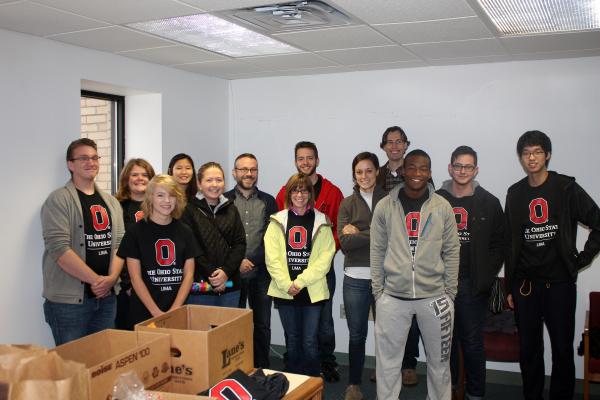STEAM Member Tijs Van Maasakkers and his OH-LEX project helps shrinking Ohio cities

Article from The Office of Outreach and Engagement: http://oncampus.osu.edu/oh-lex-project-to-help-shrinking-ohio-cities/
In the 1800s, during the Industrial Revolution, there was not enough space. Dense populations swarmed into cities hoping to get a piece of the American Dream. In response to these growing cities, land was strategically mapped out to accommodate large amounts of people, and even more land was planned out when those people started their own businesses.
But what happens when the opposite occurs? What happens when people pack up and leave these cities, abandoning their land and structures previously used to house their businesses?
The Ohio Land Exchange plans to address exactly that. Starting with Lima, Ohio, the program hopes to encourage stake-holders, like Head Start Lima, interested in more space to negotiate and share structures in the city, and ultimately turn those tax deficiencies into productive lands.
“We’re applying this set of existing practices to kind of a new field for planning,” said Mattijs Van Maasakkers, assistant professor of city and regional planning in the Knowlton School and one of the OH-LEX principal investigators. “Planning, historically, has been about ‘what do you do if a city is growing?’ ‘where does stuff go?’ Well, in the last 10 years, it has been about what do you do if a city shrinks, can you still plan strategically?”
After receiving an Engagement Impact Grant from the Office of Outreach and Engagement, Van Maasakkers, along with two co-principal investigators, Kristi Cheramie and Jacob Boswell, started the project in the summer and plan to work with the city of Lima for two years, and hopefully move on to other cities in Ohio after that. The team brought the idea to Ohio after becoming finalists in the Van Alen Institute’s Future Ground competition, where they were chosen for their New Orleans Land Exchange project.
The first phase of the OH-LEX is interviewing prospective stakeholders. Then, a map will be constructed based on the areas that each organization likes. If their interests overlap, a negotiation is planned to try to accommodate the needs of each group.
The team is working closely with the city of Lima and Ohio State Lima to get “boots on the ground” in order to map out the vacant parcels this fall. Van Maasakkers said some organizations may want a parcel close to a park, or one with street lights nearby, and in order to do that, they need to gather information with people who know the area — specifically, Ohio State Lima students.
Amy Odum, director of community development for the city of Lima, said 12 students headed out into Lima neighborhoods on Oct. 3 to begin surveying the land. She said this project is a perfect example of a community-university partnership because it brings students real-life planning and community development experience, but it also has a great impact on the city.
“It provides back to the city very detailed data about the condition and economic viability of some of these properties. We, as a small community, do not have a strong technology system available to us,” Odum said. “The university with its much more advanced tools and equipment can take the data, synthesize it for us, and bring it back in a way that becomes economically useful.”
Van Maasakkers said students from the Lima and Columbus campuses will play an important role in the OH-LEX, for a few reasons. He is teaching a site-planning course on the Columbus campus to his city and regional planning students and hopes to foster their creativity by having them create site plans in which the stakeholders can share currently vacant spaces. In addition, students in landscape architecture will work on ideas to redevelop these lots. Then, he hopes to pass some of these ideas on to the Lima campus theater program, which is especially talented with building sets and stages, so they can bring their projects to life.
“I hope that by bringing together local stakeholders who really know the city much better than we do, and putting them in touch with a bunch of creative students here and creative students on the Lima campus, in the process we will come up with unique but also very Lima-specific ideas for what can happen on those parcels,” Van Maasakkers said.
